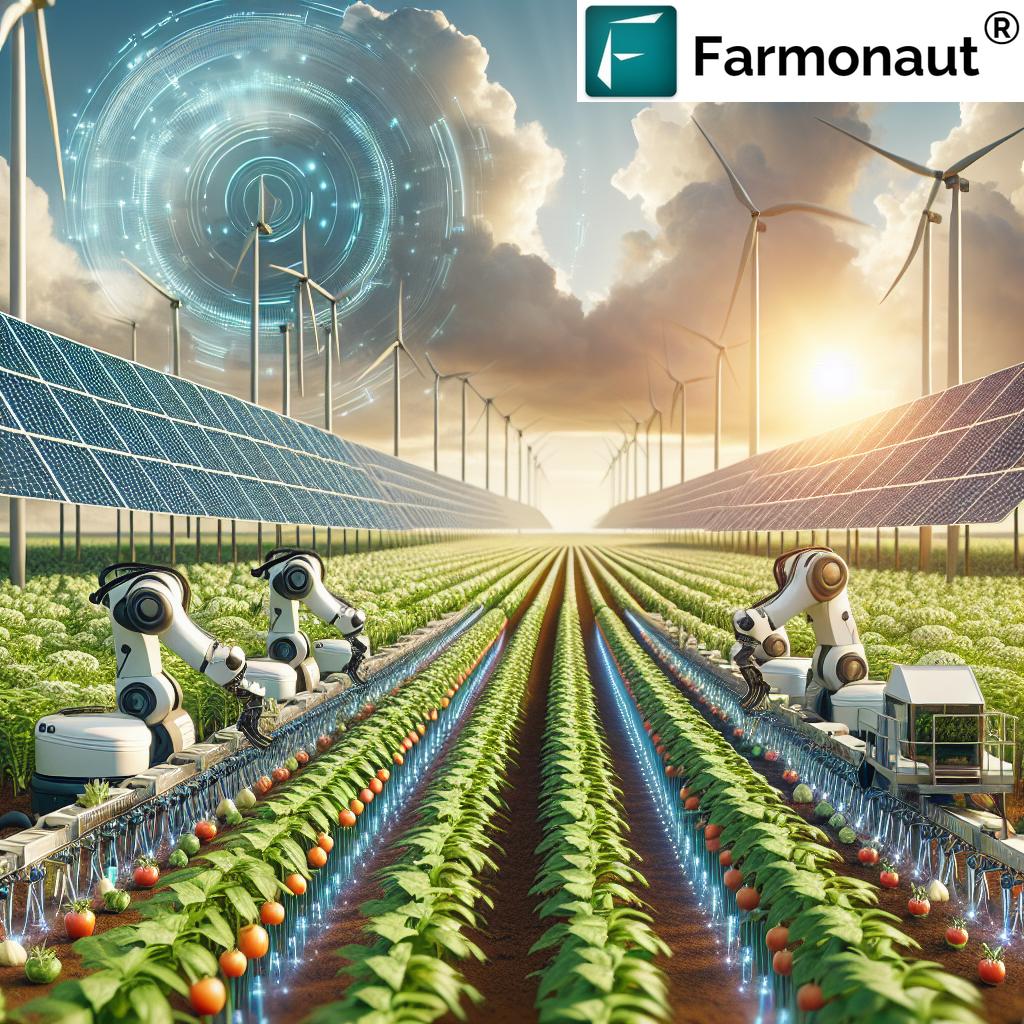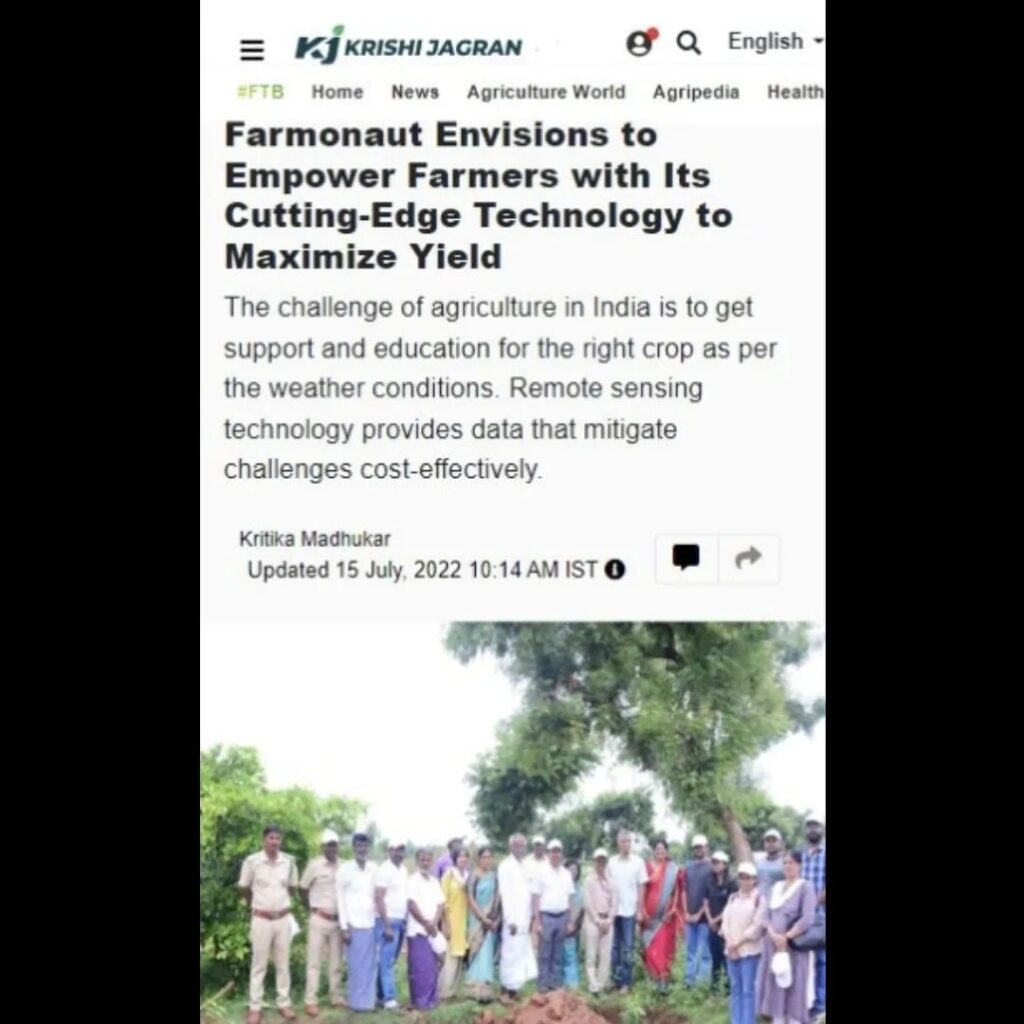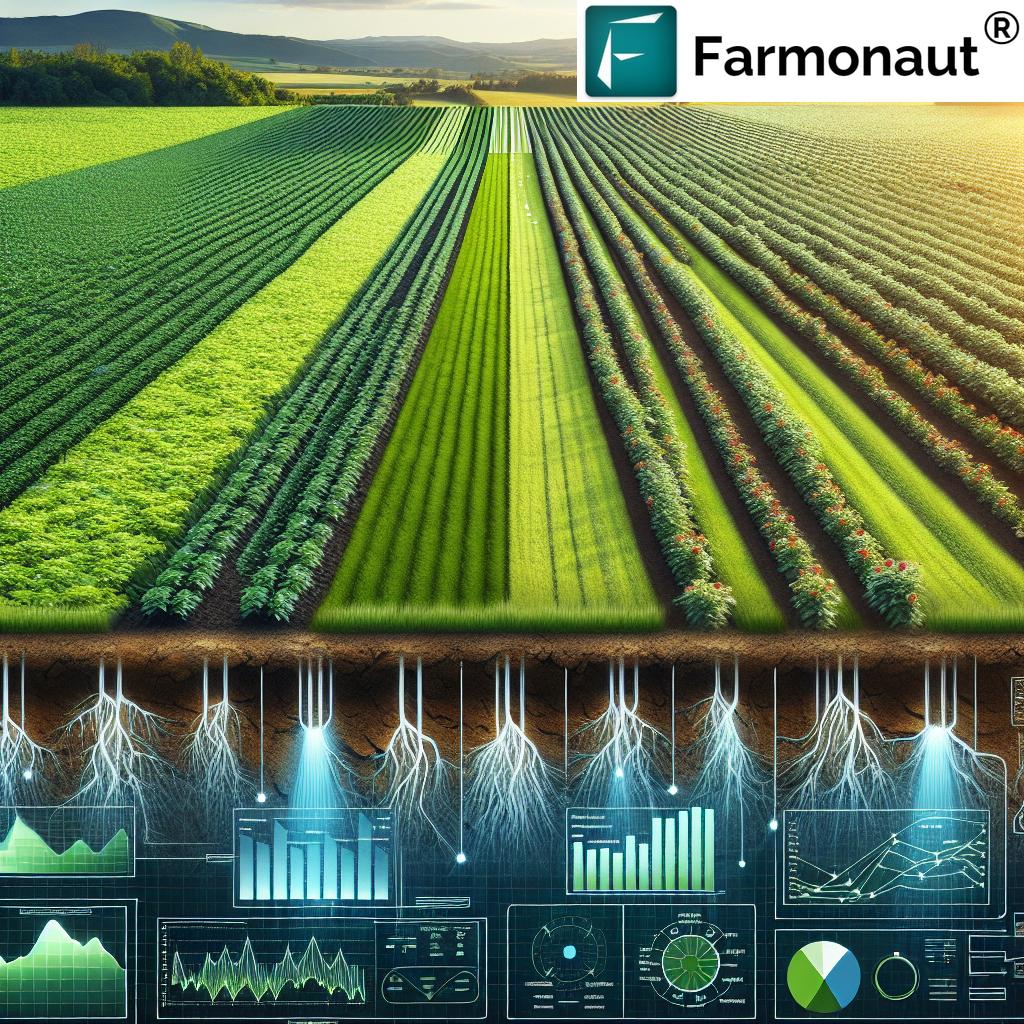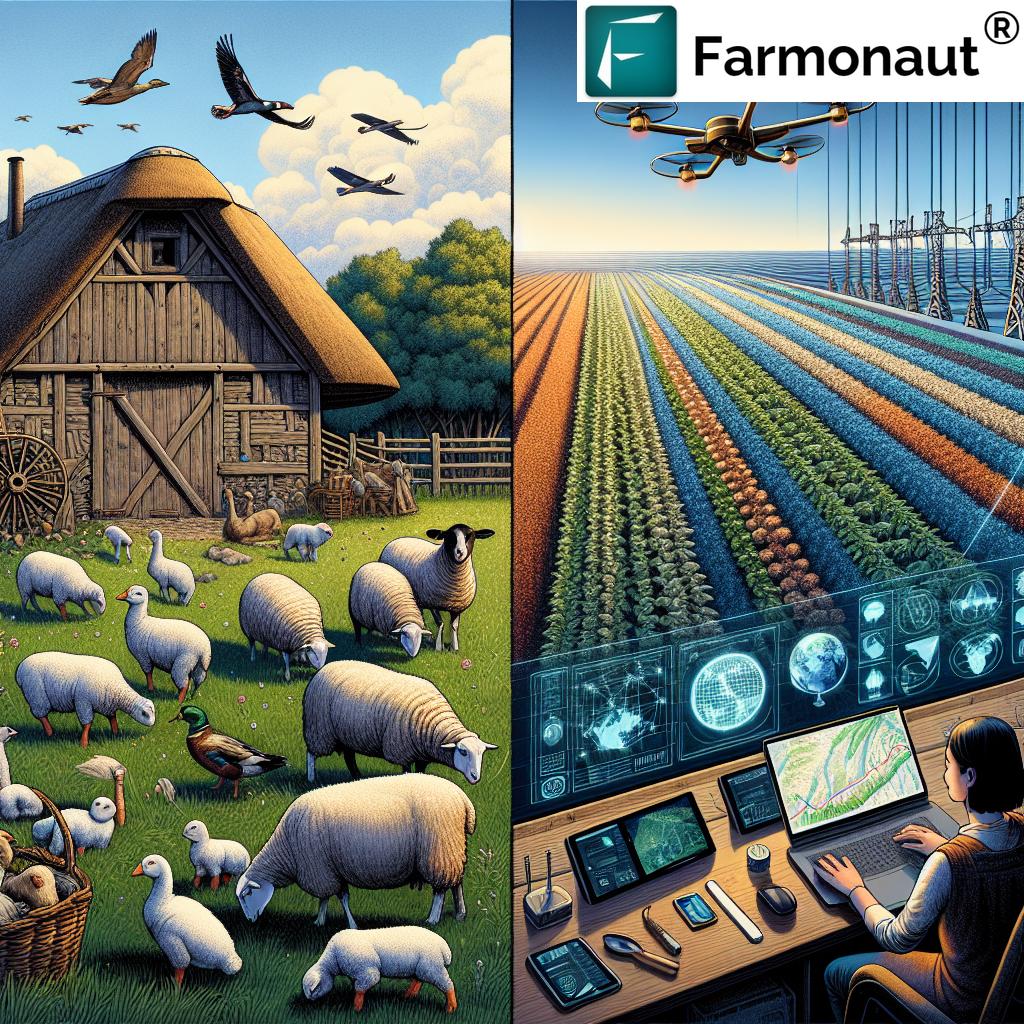Managing Losses in Sugarcane Farms: Harnessing the Power of Satellite Data
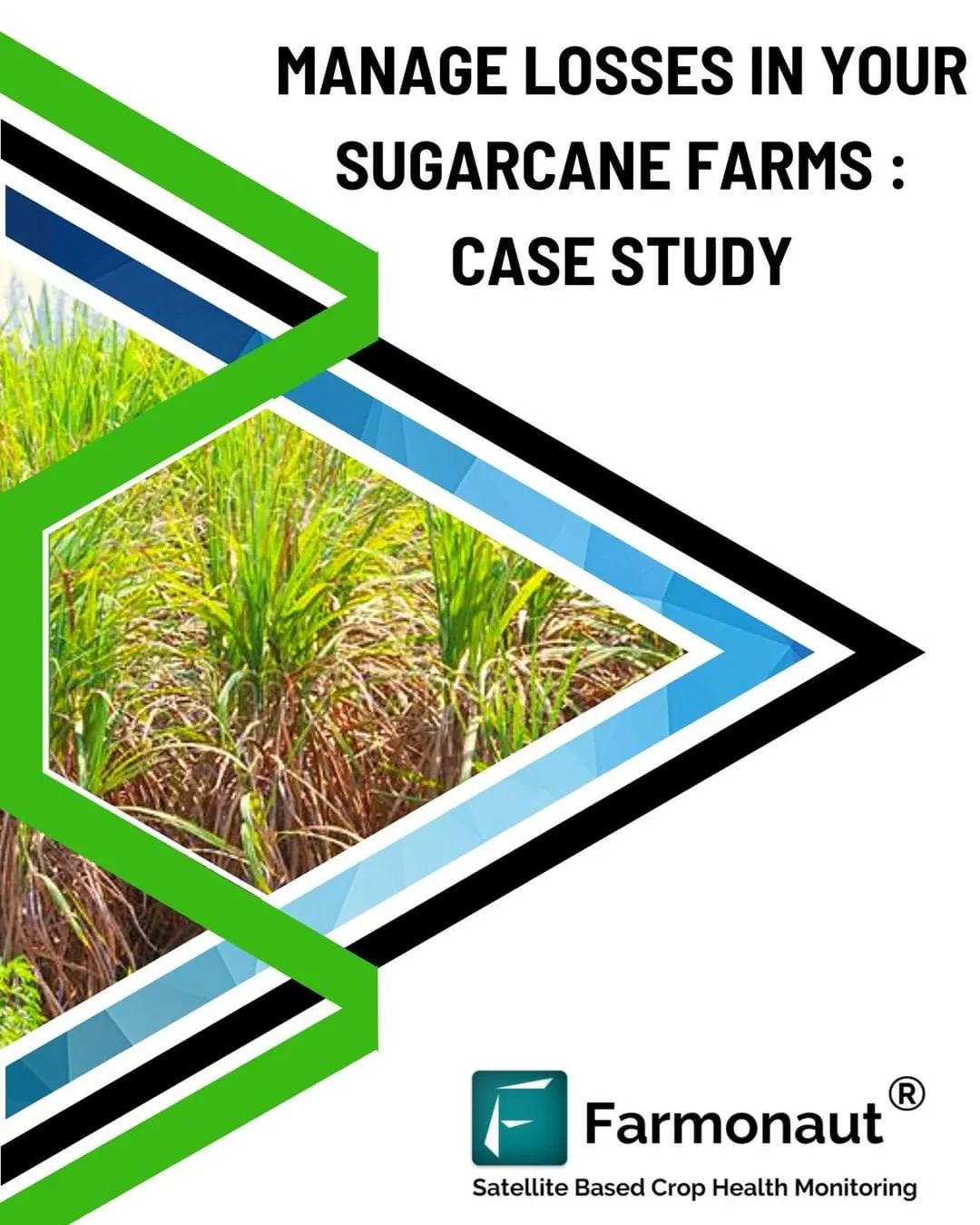
At Farmonaut, we understand the challenges faced by sugarcane farmers in managing their crops and minimizing losses. As pioneers in agricultural technology, we’ve developed innovative solutions that leverage satellite weather data and remote sensing techniques to help farmers manage losses in sugarcane farms effectively. In this comprehensive guide, we’ll explore how our cutting-edge technology is revolutionizing sugarcane farming and helping farmers achieve better yields while reducing resource wastage.
Table of Contents
- Introduction to Sugarcane Farming Challenges
- The Role of Satellite Technology in Agriculture
- Farmonaut’s Approach to Sugarcane Farm Management
- Key Benefits of Using Satellite Data for Sugarcane Farming
- Case Study: Success Stories from Sugarcane Farms
- Comparing Farmonaut’s Satellite System with Drone and IoT Solutions
- How to Get Started with Farmonaut
- FAQs
- Conclusion
1. Introduction to Sugarcane Farming Challenges
Sugarcane farming is a complex and demanding agricultural endeavor that faces numerous challenges. From unpredictable weather patterns to pest infestations and water management issues, sugarcane farmers must navigate a myriad of obstacles to ensure a successful harvest. Some of the key challenges include:
- Water stress and drought conditions
- Pest and disease outbreaks
- Nutrient deficiencies
- Inefficient irrigation practices
- Difficulties in crop health assessment
- Climate change impacts
These challenges can lead to significant losses in yield and quality, affecting the overall profitability of sugarcane farming operations. This is where advanced technology, particularly satellite-based solutions, comes into play.
2. The Role of Satellite Technology in Agriculture
Remote sensing technology, particularly satellite-based systems, has emerged as a game-changer in modern agriculture. By providing a bird’s-eye view of vast agricultural landscapes, satellites offer unprecedented insights into crop health, soil conditions, and environmental factors that influence farm productivity.
Key advantages of satellite technology in agriculture include:
- Wide-area coverage: Satellites can monitor large areas of farmland simultaneously, making them ideal for extensive sugarcane plantations.
- Frequent data updates: Regular satellite passes provide up-to-date information on crop conditions.
- Non-invasive monitoring: Unlike ground-based methods, satellite monitoring doesn’t disturb crops or soil.
- Weather-independent operation: Satellites can collect data regardless of cloud cover or other atmospheric conditions.
- Historical data analysis: Long-term satellite data enables trend analysis and informed decision-making.
At Farmonaut, we harness these advantages to provide sugarcane farmers with powerful tools for crop management and loss prevention.
3. Farmonaut’s Approach to Sugarcane Farm Management
Our approach to managing losses in sugarcane farms is rooted in cutting-edge technology and data-driven insights. Here’s how we empower farmers:
3.1 Satellite-Based Crop Health Monitoring
We use multispectral satellite imagery to assess various aspects of sugarcane health:
- Vegetation indices (e.g., NDVI) to measure crop vigor
- Soil moisture analysis to optimize irrigation
- Early detection of stress factors like pests or diseases
3.2 AI-Powered Advisory System
Our Jeevn AI system analyzes satellite data along with other inputs to provide:
- Personalized crop management recommendations
- Real-time alerts for potential issues
- Optimal timing for various farming activities
3.3 Weather Forecasting and Analysis
Leveraging satellite weather data, we offer:
- Accurate short-term and long-term weather predictions
- Historical weather pattern analysis
- Climate change impact assessments
3.4 Resource Optimization Tools
Our platform helps farmers optimize the use of critical resources:
- Water management strategies based on soil moisture data
- Fertilizer application recommendations
- Pest control guidance
4. Key Benefits of Using Satellite Data for Sugarcane Farming
By integrating satellite technology into sugarcane farming practices, we offer numerous benefits:
4.1 Improved Crop Yield
Our satellite-based monitoring system helps farmers:
- Identify and address issues early, preventing yield loss
- Optimize growing conditions throughout the crop cycle
- Make data-driven decisions for better harvest outcomes
4.2 Cost Reduction
Farmers can significantly reduce operational costs by:
- Minimizing unnecessary pesticide and fertilizer use
- Optimizing water usage through precise irrigation scheduling
- Reducing labor costs associated with manual field scouting
4.3 Environmental Sustainability
Our approach promotes sustainable farming practices by:
- Reducing chemical runoff through targeted application
- Conserving water resources
- Minimizing the carbon footprint of farming operations
4.4 Risk Mitigation
Satellite data helps farmers manage risks more effectively:
- Early warning systems for potential crop failures
- Better preparedness for adverse weather conditions
- Improved decision-making based on comprehensive data
5. Comparing Farmonaut’s Satellite System with Drone and IoT Solutions
While drones and IoT devices offer certain advantages in farm monitoring, our satellite-based system provides unique benefits that make it particularly suitable for large-scale sugarcane farming. Here’s a comparison:
| Feature | Farmonaut Satellite System | Drone-based Monitoring | IoT-based Monitoring |
|---|---|---|---|
| Coverage Area | Large (100s to 1000s of acres) | Limited (10s to 100s of acres) | Very Limited (Specific points) |
| Frequency of Data Collection | Daily to weekly | As needed (manual flights) | Continuous (for installed sensors) |
| Initial Setup Cost | Low | High (equipment purchase) | Medium to High (sensor installation) |
| Operational Complexity | Low (automated) | High (requires skilled operators) | Medium (maintenance required) |
| Weather Dependency | Low | High | Medium |
| Data Processing | Automated (AI-powered) | Manual or semi-automated | Automated for specific parameters |
| Scalability | Highly scalable | Limited scalability | Moderate scalability |
As evident from the comparison, our satellite-based system offers unparalleled coverage, cost-effectiveness, and ease of use, making it an ideal choice for large-scale sugarcane farming operations.
6. How to Get Started with Farmonaut
Getting started with Farmonaut’s satellite-based sugarcane farm management system is easy and straightforward. Here’s how you can begin:
- Sign Up: Visit our application page to create your account.
- Map Your Farm: Use our intuitive interface to outline your sugarcane fields.
- Choose Your Plan: Select a subscription plan that best suits your farm’s size and needs.
- Access Insights: Start receiving regular updates and insights about your sugarcane crops.
- Mobile Access: Download our mobile app for on-the-go monitoring:
For developers interested in integrating our technology into their own applications, we offer a robust Satellite Images API. You can find detailed documentation for our Satellite Weather API to get started with custom integrations.
7. FAQs
Q1: How accurate is satellite-based crop monitoring?
A1: Our satellite-based monitoring system boasts an accuracy rate of over 90% in detecting crop health issues and stress factors. The system is continuously improved through machine learning algorithms that analyze vast amounts of data.
Q2: Can satellite monitoring replace traditional field scouting?
A2: While satellite monitoring significantly reduces the need for extensive field scouting, it’s best used in combination with occasional ground truthing for optimal results. Our system helps focus scouting efforts on areas that need attention, making the process more efficient.
Q3: How often is the satellite data updated?
A3: We provide updates every 3-5 days, depending on satellite availability and weather conditions. This frequency ensures that farmers have access to timely information for decision-making.
Q4: Is Farmonaut’s system suitable for small sugarcane farms?
A4: Absolutely! While our system is highly scalable for large operations, we offer affordable plans for small and medium-sized farms as well. The insights provided can be particularly valuable for smaller operations looking to optimize their resources.
Q5: How does Farmonaut handle data privacy and security?
A5: We take data privacy and security very seriously. All farm data is encrypted and stored securely. We adhere to strict privacy policies and never share individual farm data without explicit consent.
8. Conclusion
As we’ve explored in this comprehensive guide, managing losses in sugarcane farms through satellite-based monitoring and analytics is not just a possibility – it’s a game-changing reality. At Farmonaut, we’re committed to empowering sugarcane farmers with the tools and insights they need to optimize their operations, increase yields, and promote sustainable farming practices.
By harnessing the power of satellite weather data, remote sensing technology, and artificial intelligence, we’re ushering in a new era of precision agriculture that’s accessible to farmers of all scales. Whether you’re managing a vast sugarcane plantation or a small family farm, our solutions are designed to help you make informed decisions and achieve better results.
We invite you to join the growing community of forward-thinking farmers who are leveraging Farmonaut’s technology to transform their sugarcane farming operations. Together, we can build a more productive, sustainable, and profitable future for sugarcane agriculture.
Join us in revolutionizing sugarcane farming with the power of satellite technology. Together, we can cultivate success and sustainability in every field.







